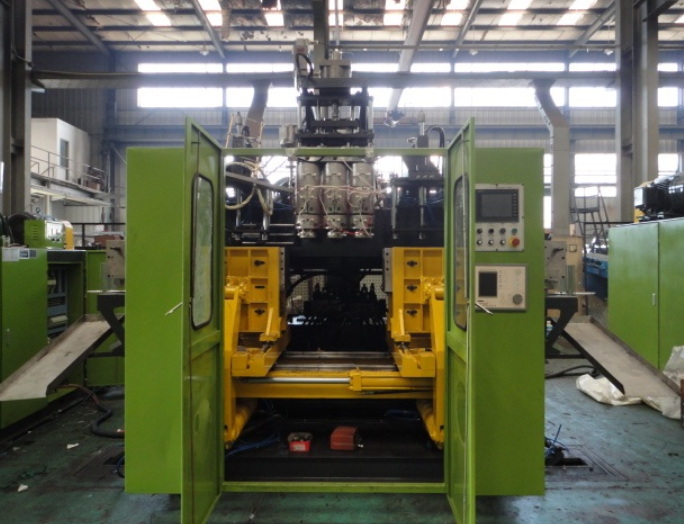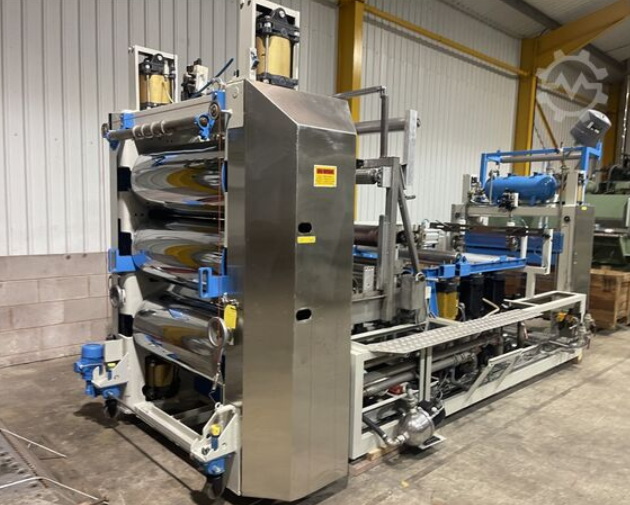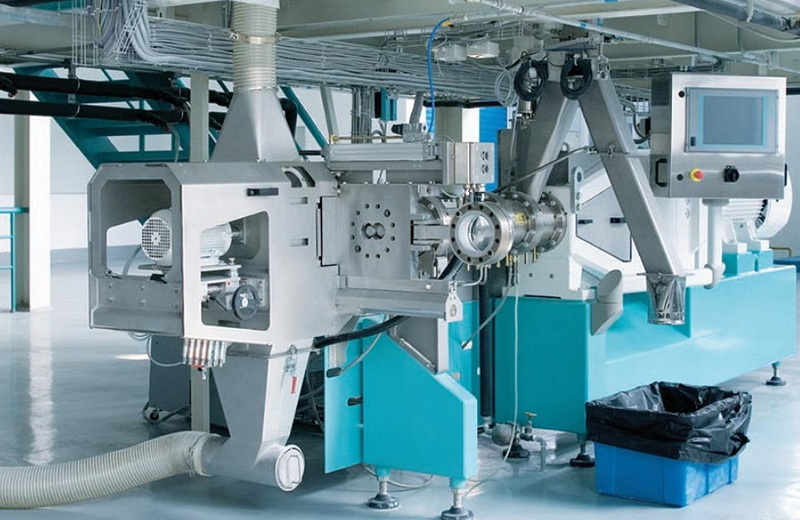Content Menu
● Introduction to Metal Extrusion and Drawing Processes and Equipment
● Key Maintenance Principles for Longevity
● Daily and Routine Maintenance Tasks
>> Daily Walk-Around Inspections
>> Routine Cleaning
>> Lubrication Checks
>> Tightening and Adjustment
● Advanced Maintenance Techniques and Predictive Diagnostics
>> Predictive Maintenance
>> Scheduled Overhauls
● Lubrication and Wear Protection
>> Critical Role of Lubrication
>> Wear-Resistant Coatings
● Cleaning and Tool Care Best Practices
>> Tool Cleaning Techniques
>> Storage of Tools and Spare Parts
● Operator Training and Documentation
>> Comprehensive Training
>> Maintenance Records
● Storage, Environment, and Handling
>> Proper Storage Conditions
>> Handling and Lifting
● Troubleshooting Common Issues
>> Misalignment
>> Hydraulic Leaks
>> Die Wear and Breakage
>> Overheating
● Conclusion
● FAQ
>> 1. What are the most common causes of wear in metal extrusion and drawing equipment?
>> 2. How often should dies and tooling be replaced or recoated?
>> 3. What is the role of predictive maintenance in metal extrusion and drawing processes and equipment?
>> 4. Why is operator training critical for equipment longevity?
>> 5. How does the storage environment affect metal extrusion and drawing equipment?
● Citations:
Metal extrusion and drawing processes are at the heart of modern manufacturing, producing everything from automotive components to electrical wiring and structural elements. The equipment used in these processes—extrusion presses, drawing benches, dies, and ancillary tools—represents a significant capital investment. Ensuring their longevity is essential for operational efficiency, product quality, and return on investment. In this comprehensive guide, we'll explore proven strategies for maintaining metal extrusion and drawing equipment, covering daily routines, advanced diagnostics, preventive maintenance, and best practices for both operators and maintenance teams.

Introduction to Metal Extrusion and Drawing Processes and Equipment
Metal extrusion and drawing are deformation processes used to create long products with constant cross-sections, such as rods, wires, tubes, and structural profiles. Both processes rely on forcing metal through a die, but differ in their mechanics:
- Extrusion: The metal billet is pushed (extruded) through a die, reducing its cross-section and forming the desired profile. Extrusion can be hot or cold, direct or indirect, and is widely used for aluminum, copper, and steel products[2][7].
- Drawing: A metal rod, wire, or tube is pulled through a die to reduce its diameter and improve its mechanical properties. Drawing is common for producing wire, shafts, and tubes for various applications[2].
The main equipment includes:
- Hydraulic or mechanical extrusion presses
- Drawing benches and capstans
- Dies and tooling (often with wear-resistant coatings)
- Ancillary systems (lubrication, cooling, handling)
Given the high mechanical stresses, thermal cycles, and precision required, maintaining this equipment is crucial for productivity and product quality.
Key Maintenance Principles for Longevity
Longevity in metal extrusion and drawing equipment is achieved through a combination of preventive maintenance, operator training, and the use of advanced diagnostics. The following principles are foundational:
- Regular Inspection: Daily and scheduled inspections catch minor issues before they escalate[4][5].
- Proper Lubrication: Reduces friction, wear, and overheating in moving parts[2][4][6].
- Cleanliness: Prevents debris buildup, which can cause wear and misalignment[1][3].
- Timely Replacement of Wear Parts: Dies, seals, and bearings must be replaced before failure[5].
- Alignment and Calibration: Ensures even loading and precision, preventing premature wear[4].
- Operator Training: Proper use prevents misuse and accidental damage[1][6].
- Record Keeping: Maintenance logs help track usage, repairs, and identify patterns[6].
Daily and Routine Maintenance Tasks
Daily Walk-Around Inspections
A daily inspection routine is essential for spotting leaks, misalignments, or abnormal noises. Key points to check include:
- Hydraulic system for oil leaks and pressure levels
- Movement and alignment of rams, containers, and crossheads
- Condition of dies and tooling surfaces
- Lubrication points for adequate grease or oil[4][5]
Routine Cleaning
Dirt, dust, and metal shavings can degrade lubricants and cause abrasive wear. Clean all accessible surfaces, especially guideways, cylinder rods, and die faces. Use soft, clean rags and avoid steel tools that can scratch precision surfaces[1][3][8].
Lubrication Checks
Ensure all moving parts, especially sliding surfaces and bearings, are well-lubricated with the manufacturer-recommended products. Contaminated or depleted lubricants should be replaced immediately[2][4].
Tightening and Adjustment
Loose bolts, nuts, and fittings can cause misalignment and vibration. Check and tighten all fasteners to the specified torque values[4].
Advanced Maintenance Techniques and Predictive Diagnostics
Predictive Maintenance
Modern plants use predictive diagnostics to anticipate failures:
- Vibration Analysis: Detects misalignment, imbalance, or bearing wear early[5].
- Thermography: Identifies hotspots from friction or overload, preventing thermal damage[5].
- Oil Analysis: Monitors hydraulic fluid condition for contamination or degradation[4].
These techniques allow targeted interventions, reducing downtime and extending equipment life.
Scheduled Overhauls
Periodic overhauls involve:
- Disassembling key components for deep inspection
- Replacing seals, bearings, and worn parts
- Recalibrating alignment and control systems
- Cleaning and re-coating dies and tooling
Lubrication and Wear Protection
Critical Role of Lubrication
Lubrication minimizes friction and heat, essential in both extrusion and drawing:
- Extrusion: Lubricate container, crosshead, and die carrier guides daily[4].
- Drawing: Apply phosphate-conversion coatings and soaps to workpieces, especially for steel, to prevent sticking and tool wear[2].
Wear-Resistant Coatings
Dies and tooling benefit from ceramic or wear-resistant coatings, which:
- Reduce friction and wear
- Resist corrosion and thermal cycling
- Extend the interval between die replacements[5]
Regular inspection of coated surfaces is necessary to detect breakdowns or chipping.

Cleaning and Tool Care Best Practices
Tool Cleaning Techniques
- Use brass or copper tools (pliers, scrapers, brushes) to clean dies and tooling, avoiding hard steel tools that can mar surfaces[3][8].
- Remove and clean one tool at a time to avoid mix-ups.
- Clean tooling while still warm (not hot) for easier removal of polymer or metal residues.
- Use compressed air carefully to avoid forcing debris into recesses.
- Apply suitable cleaning solutions and fresh rags to avoid embedding metal chips into surfaces[3][8].
Storage of Tools and Spare Parts
- Store spare parts and tools in organized, labeled containers.
- Use dedicated maintenance carts for tooling, equipped with soft work surfaces and specialized tools.
- Keep repair and maintenance manuals accessible for quick reference[3][8].
Operator Training and Documentation
Comprehensive Training
Operators must be trained in:
- Correct machine operation to avoid overloading or misuse
- Recognizing early signs of wear or malfunction
- Basic maintenance tasks and safety protocols
Regular refresher courses and updates when new equipment is introduced are recommended[1][6].
Maintenance Records
Maintain detailed logs of:
- Usage hours and cycles
- Maintenance and repair activities
- Parts replaced and dates
- Incidents or breakdowns
This data supports predictive maintenance and helps identify recurring issues[6].
Storage, Environment, and Handling
Proper Storage Conditions
When not in use, extrusion and drawing equipment should be stored:
- In dry, temperature-controlled environments to prevent corrosion
- Away from dust, chemicals, and moisture
- With protective covers on sensitive surfaces[1]
Handling and Lifting
Use appropriate lifting aids (hoists, hydraulic lifts) when moving heavy or hot tooling. Always wear thermal gloves when handling heated components[3].
Troubleshooting Common Issues
Misalignment
Symptoms: Uneven wear, vibration, poor product quality
Solution: Realign main ram, container, and dies; check for loose fasteners and worn guideways[4].
Hydraulic Leaks
Symptoms: Loss of pressure, oil puddles, erratic movement
Solution: Inspect and replace seals, check hoses and fittings, monitor oil quality[4].
Die Wear and Breakage
Symptoms: Poor surface finish, dimensional inaccuracies
Solution: Inspect die surfaces regularly, replace or recoat as needed, ensure proper lubrication and cooling[5].
Overheating
Symptoms: Excessive temperatures, thermal distortion
Solution: Check lubrication, cooling systems, and avoid overloading the press or drawing machine[4][5].
Conclusion
Maintaining metal extrusion and drawing equipment for longevity is a multifaceted task that combines daily diligence, technical expertise, and strategic planning. By implementing rigorous inspection routines, ensuring proper lubrication and cleanliness, adopting predictive diagnostics, and investing in operator training, manufacturers can significantly extend the service life of their equipment. This not only reduces downtime and repair costs but also ensures consistent product quality and maximizes return on investment.

FAQ
1. What are the most common causes of wear in metal extrusion and drawing equipment?
The primary causes of wear include inadequate lubrication, buildup of dirt and debris, improper alignment, and the use of incorrect or blunt tooling. High mechanical stresses and thermal cycles also contribute to wear, especially on dies and moving parts[1][2][5].
2. How often should dies and tooling be replaced or recoated?
The frequency depends on the material processed, production volume, and type of coating used. Regular inspections are essential, but as a rule, dies should be replaced or recoated at the first sign of wear, chipping, or dimensional inaccuracies to maintain product quality[5].
3. What is the role of predictive maintenance in metal extrusion and drawing processes and equipment?
Predictive maintenance uses tools like vibration analysis, thermography, and oil analysis to detect early signs of wear or malfunction. This allows targeted interventions before major breakdowns occur, minimizing downtime and repair costs[4][5].
4. Why is operator training critical for equipment longevity?
Properly trained operators are less likely to misuse equipment, can identify early warning signs of problems, and perform basic maintenance tasks. Ongoing training ensures that maintenance and safety protocols are consistently followed, reducing the risk of premature failure[1][6].
5. How does the storage environment affect metal extrusion and drawing equipment?
Exposure to moisture, dust, and extreme temperatures can cause corrosion, degrade lubricants, and damage sensitive components. Proper storage in a clean, dry, and temperature-controlled environment is essential for preserving equipment when not in use[1].
Citations:
[1] https://www.bradyid.com/resources/equipment-longevity-best-practices
[2] https://mimoza.marmara.edu.tr/~cem/manuf/4_Drawing_Extrusion.pdf
[3] https://guill.com/news/getting-the-most-from-your-extrusion-tooling/
[4] https://dunawayinc.com/9-essential-maintenance-tips-to-maximize-the-life-of-your-hydraulic-extrusion-press/
[5] https://www.paganoni.it/en/blog-e-news/maintenance-of-wire-drawing-machines-heres-why-its-important-for-durability/
[6] https://www.hytekmarketing.biz/blog/how-to-maintain-lifespan-metal-fabrication-machinery-products
[7] https://fractory.com/metal-extrusion/
[8] https://www.medicaldesignbriefs.com/component/content/article/26544-getting-the-most-from-your-extrusion-tooling
[9] https://kdmfab.com/metal-extrusion/
[10] https://shop.machinemfg.com/comprehensive-guide-to-metal-extrusion/
[11] https://www.linkedin.com/pulse/guide-conditions-aluminum-extrusion-insights-from-eva-poon-vid0c
[12] https://www.slideshare.net/slideshow/extrusion-and-drawingppt/254924857
[13] https://satimaco.wixsite.com/satimaco/post/aluminum-extrusion-machine-maintenance-tips-for-peak-performance
[14] https://www.xinmi-machinery.com/blog/steel-wire-drawing-machine-maintenance-and-maintenance-methods
[15] https://www.sciencedirect.com/topics/engineering/metal-extrusion
[16] https://www.slideserve.com/darlenef/extrusion-and-drawing-of-metals-powerpoint-ppt-presentation
[17] https://ferrero-industrial.com/en/metal-extrusion-what-it-is-and-how-to-do-it-best/
[18] https://www.linkedin.com/pulse/nine-main-points-aluminum-extrusion-press-machine-maintenance-
[19] https://www.slideshare.net/slideshow/maintain-hand-toolsdrawing-instruments-equipment-and-paraphernaliapptx/267206591
[20] https://jresm.org/wp-content/uploads/resm2024.104ma1202rs.pdf






















